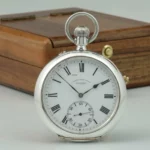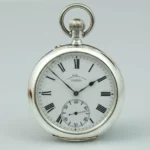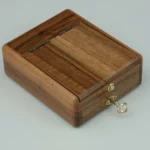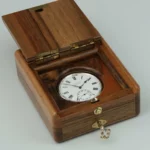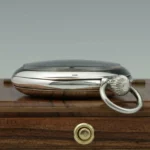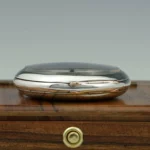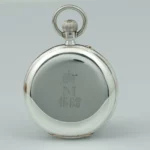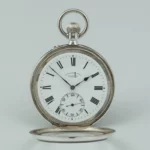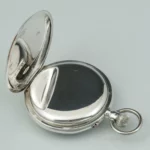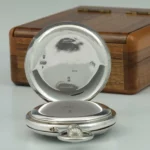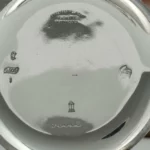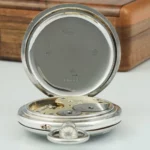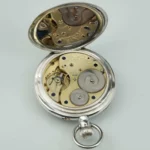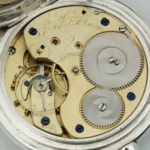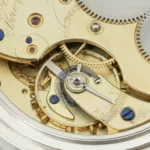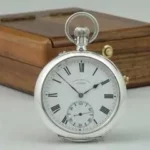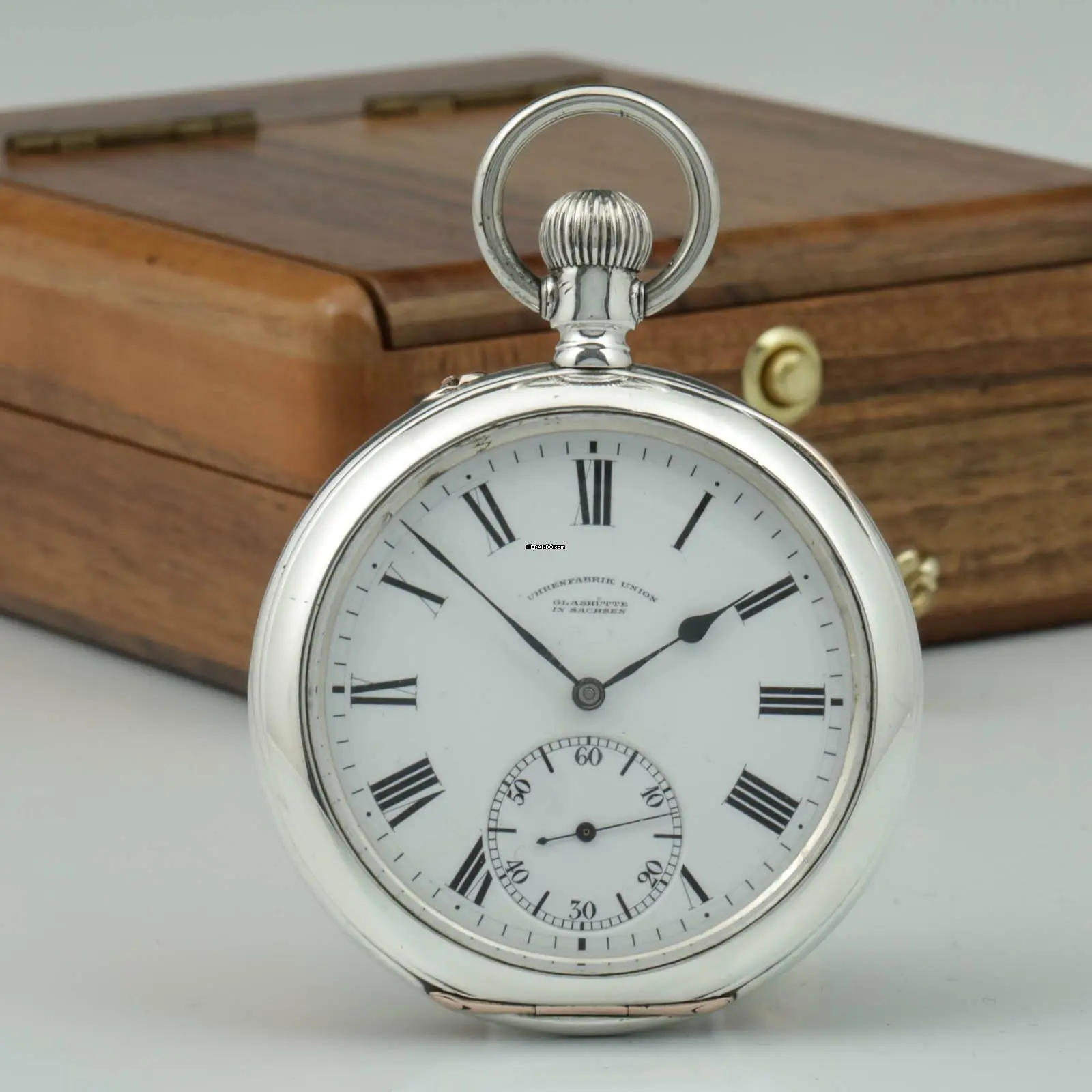
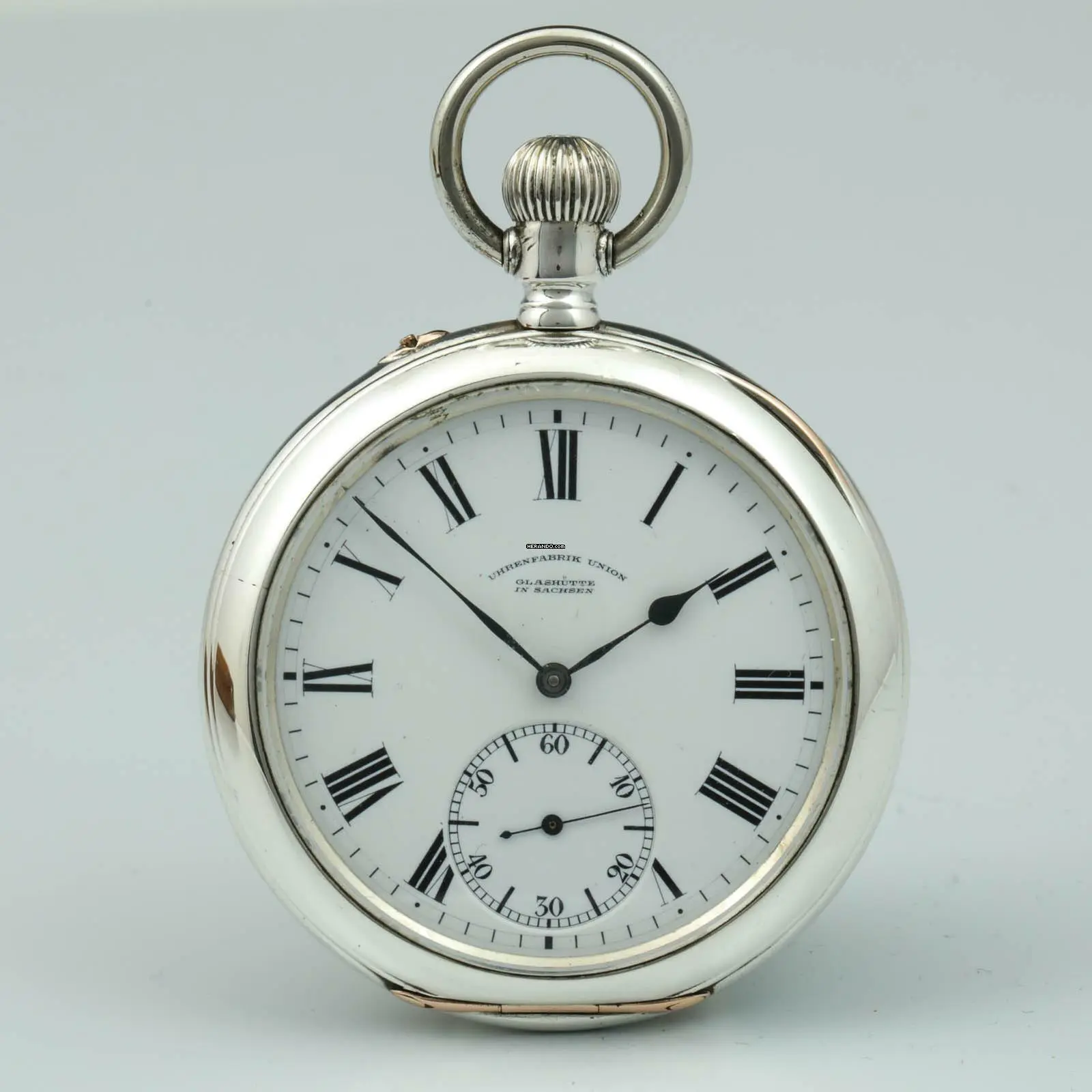

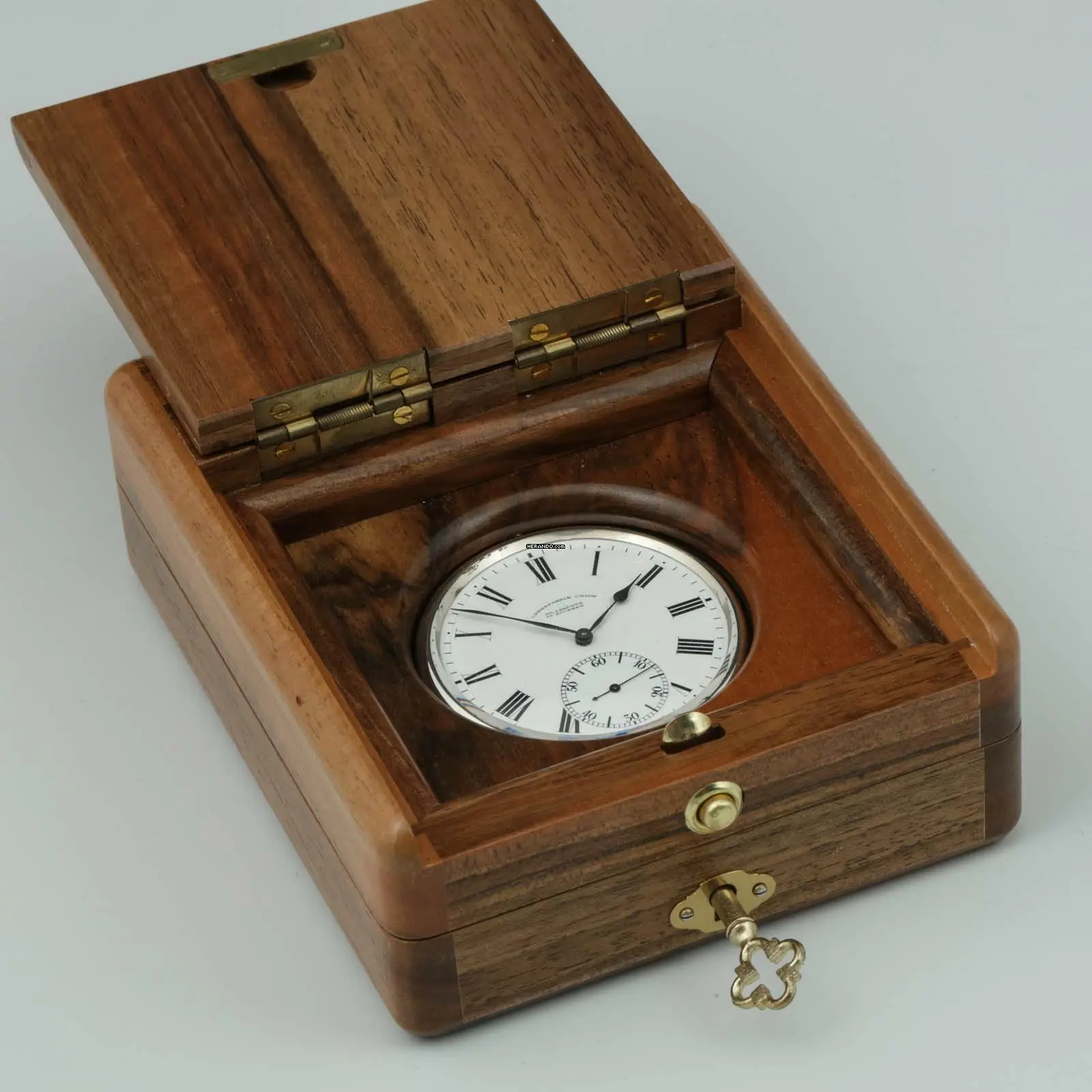
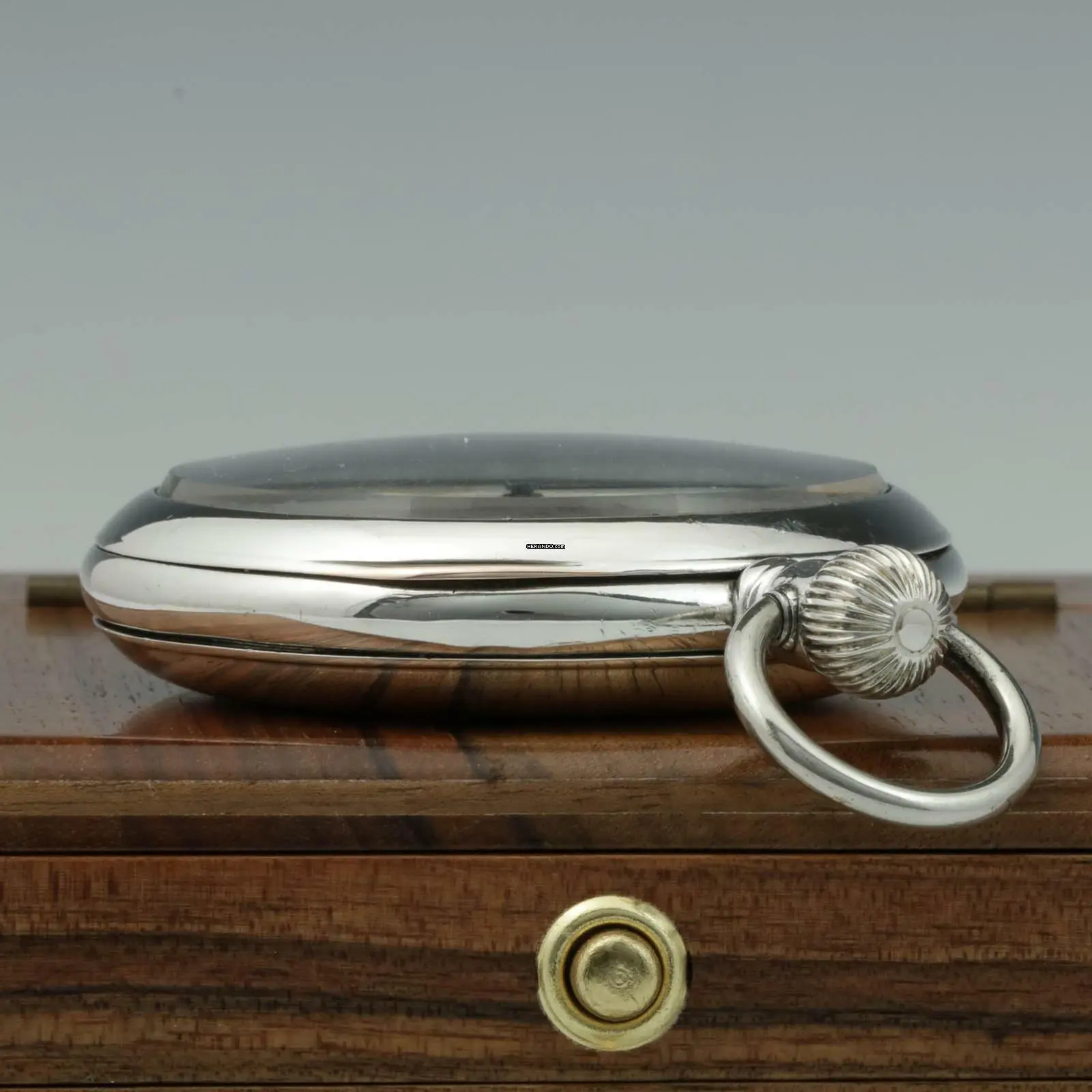
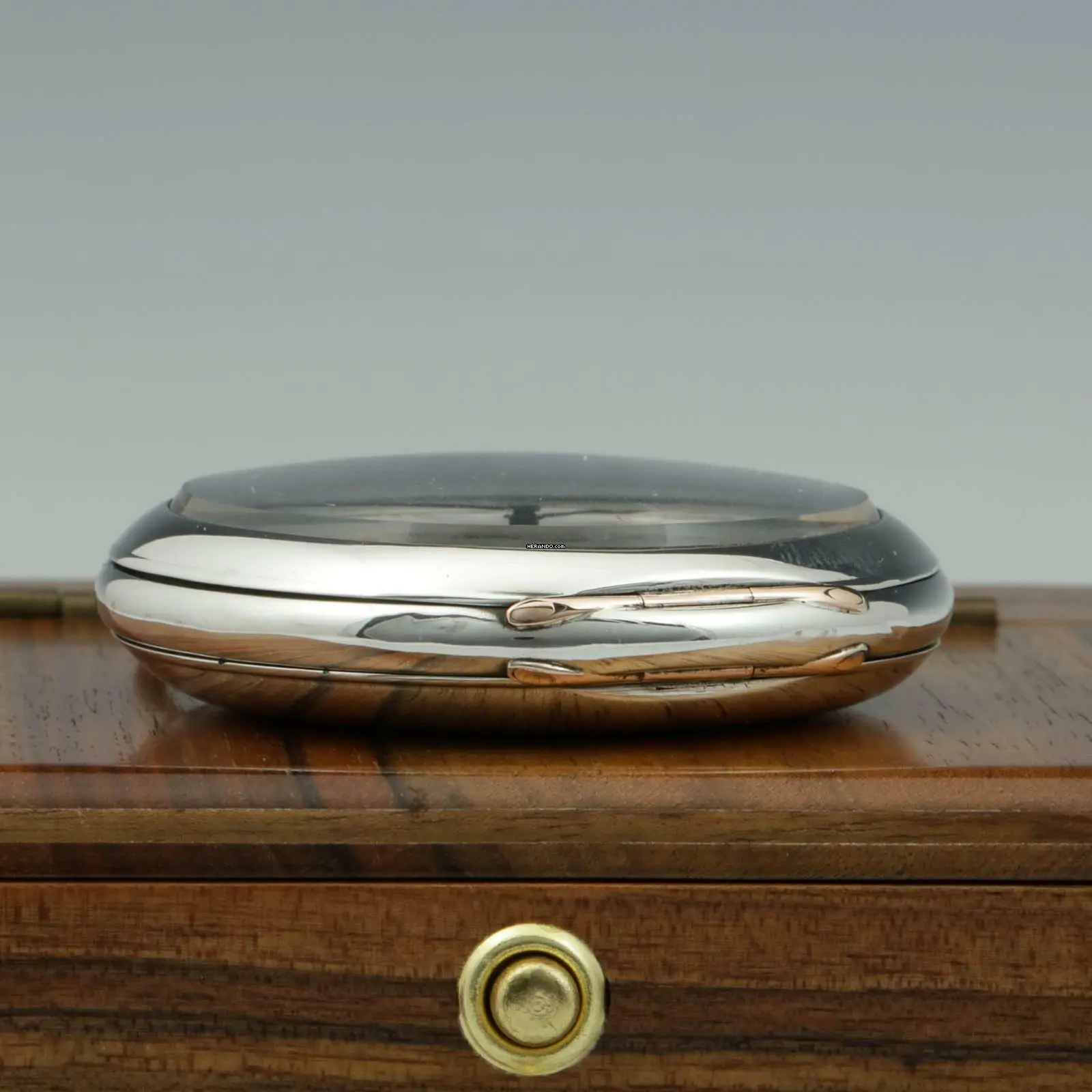
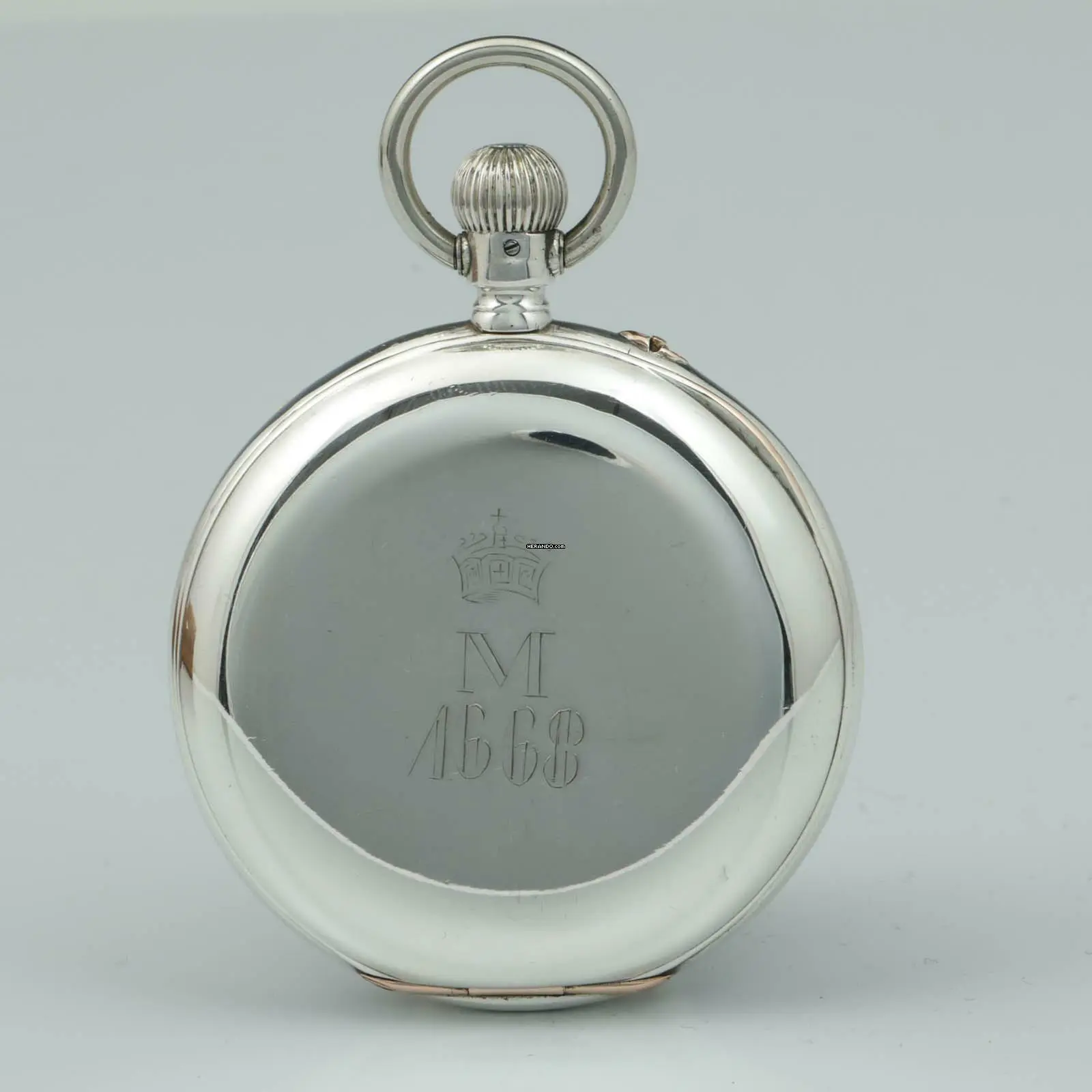
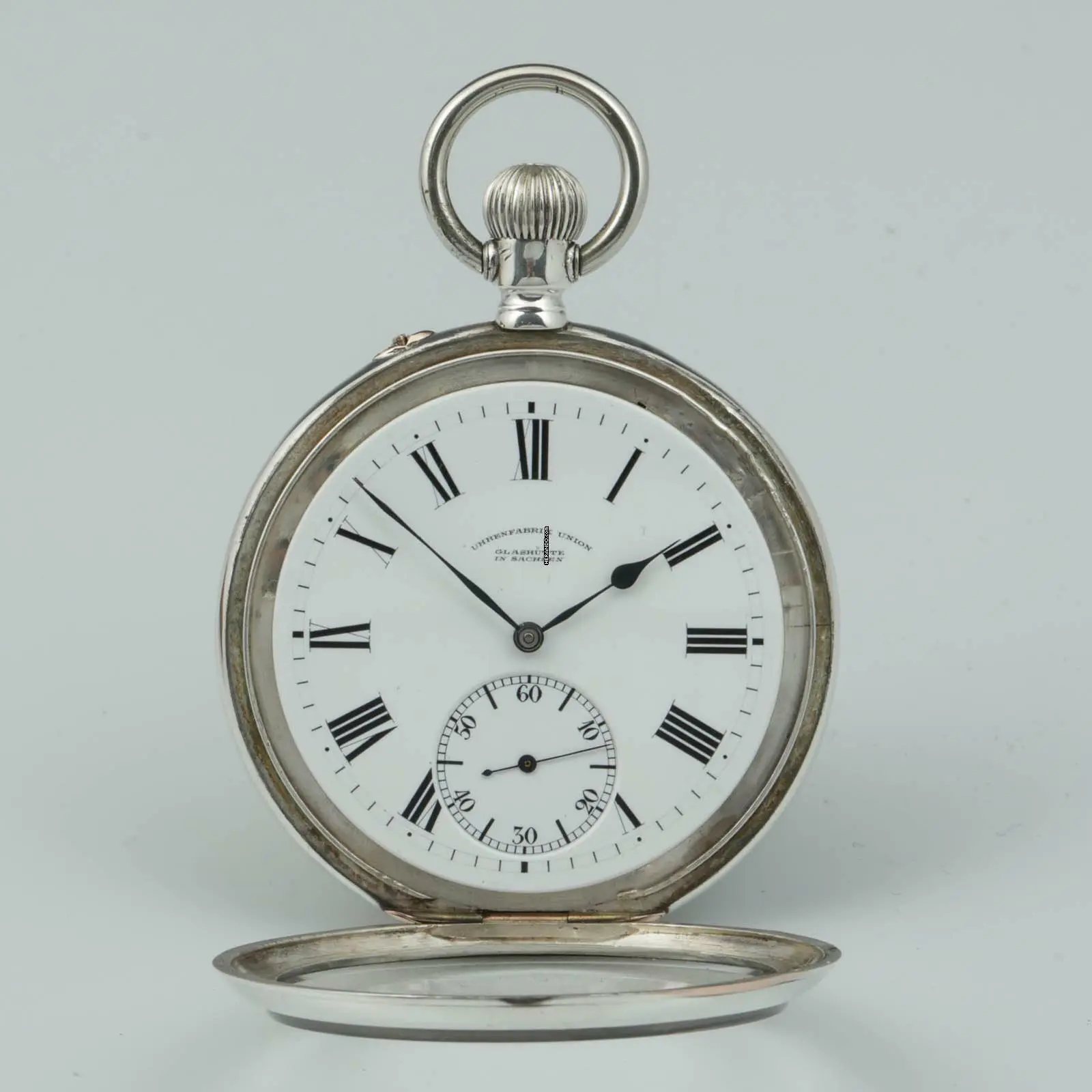


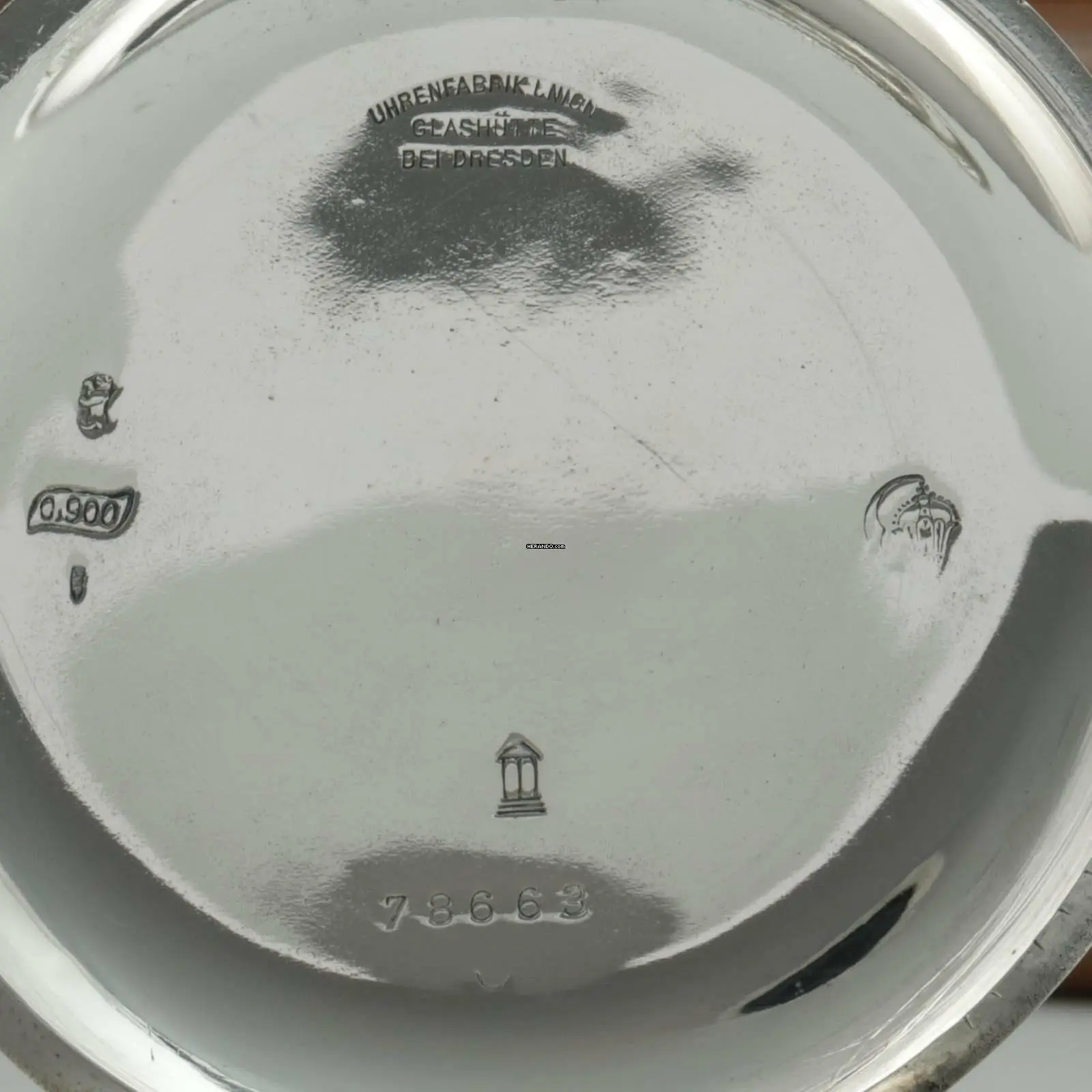
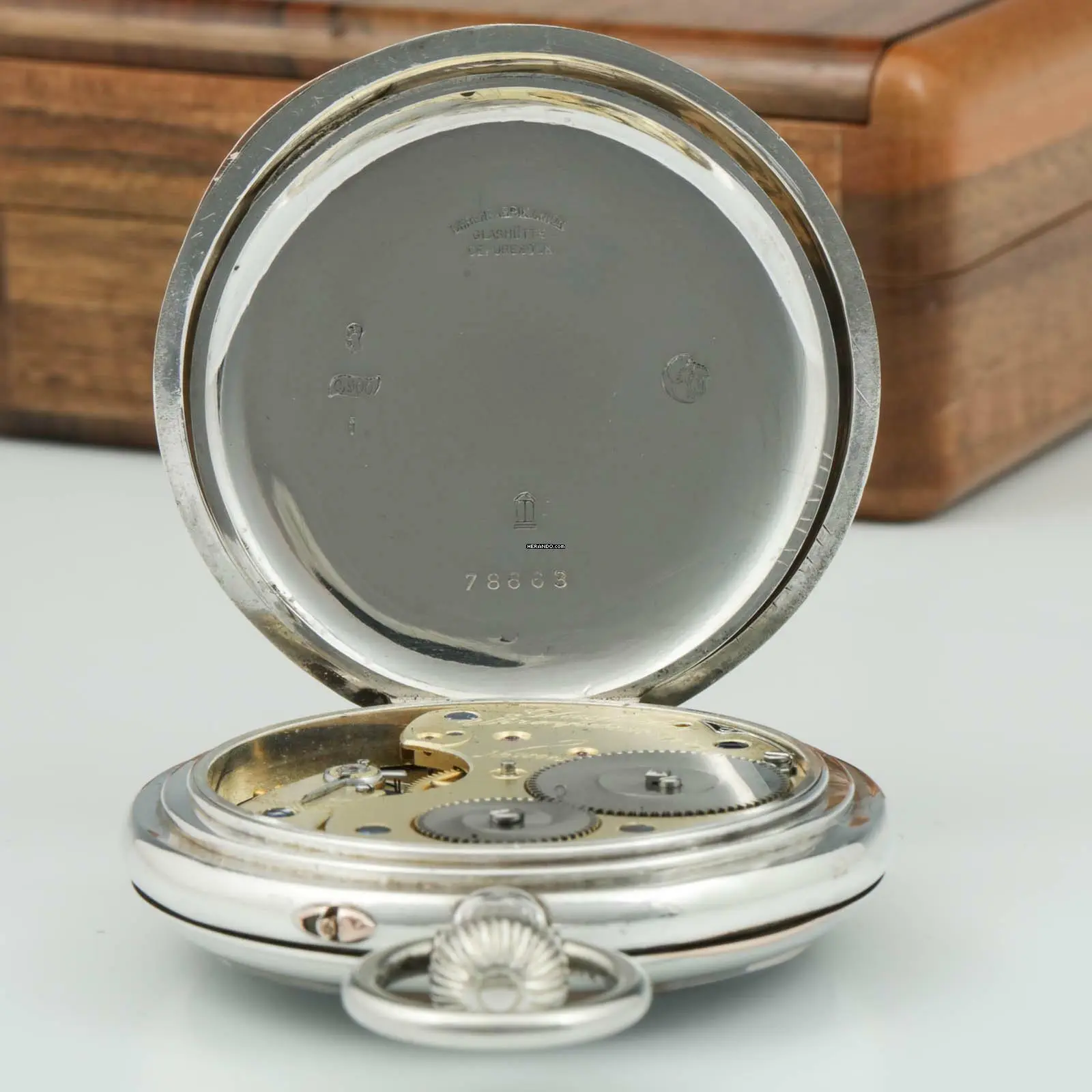
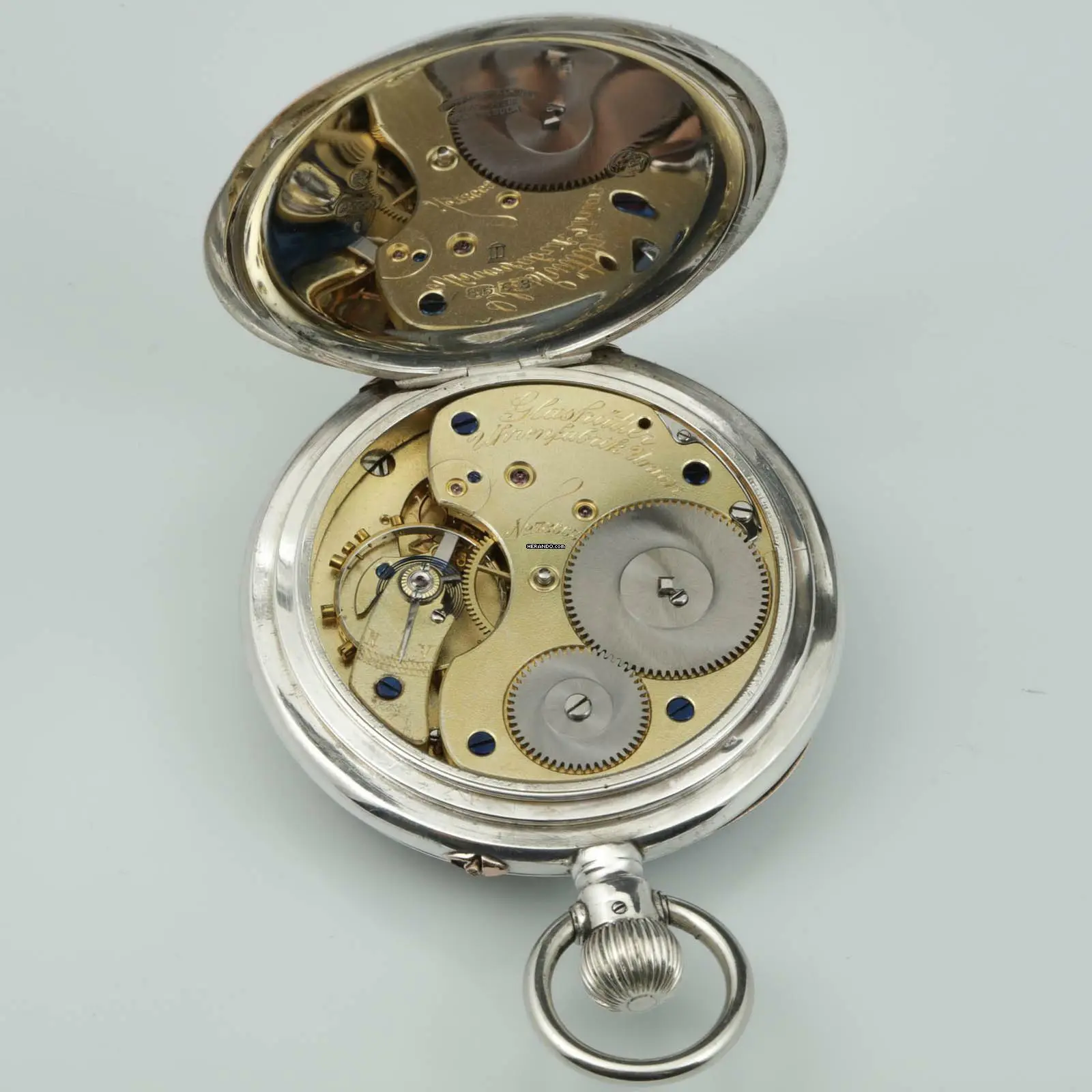
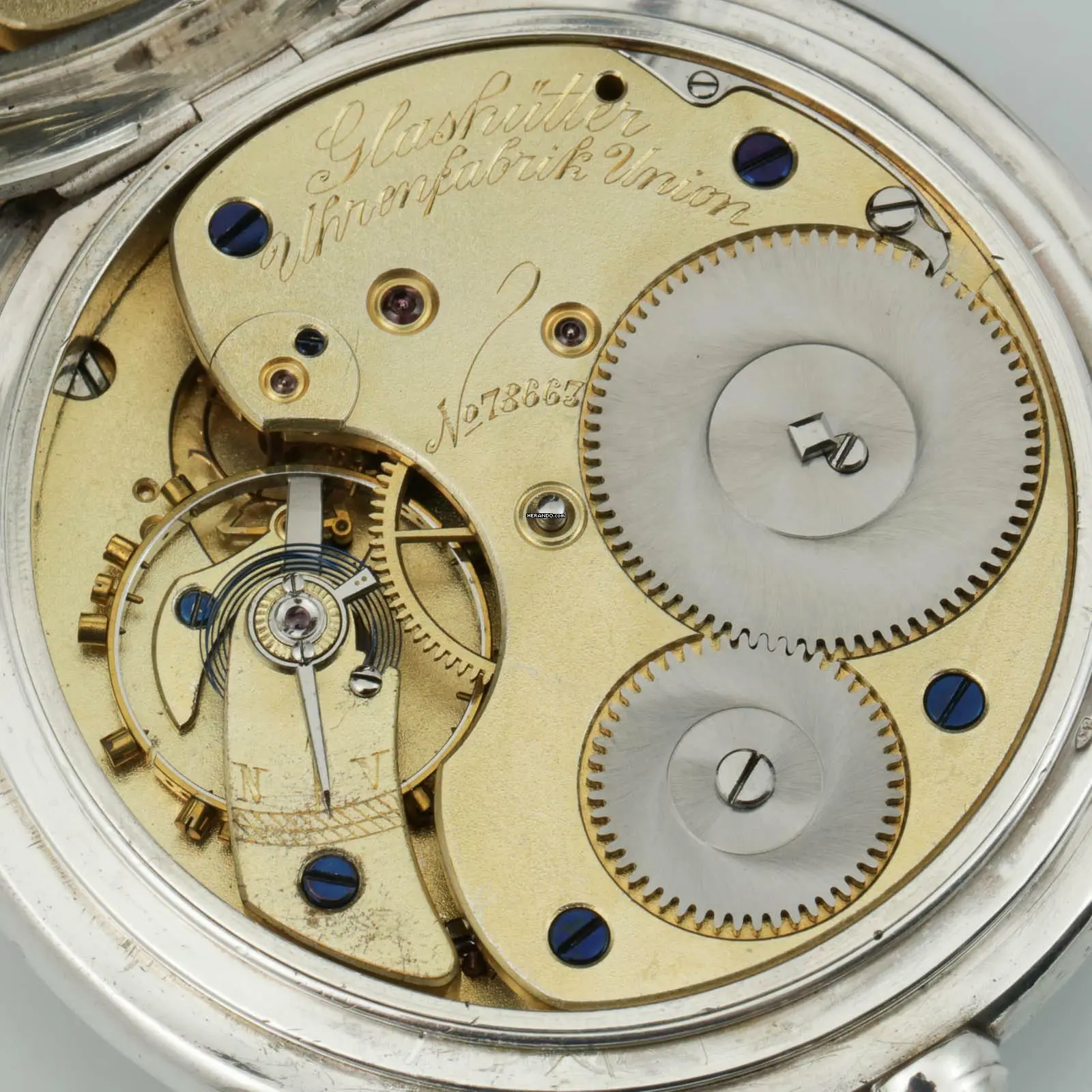
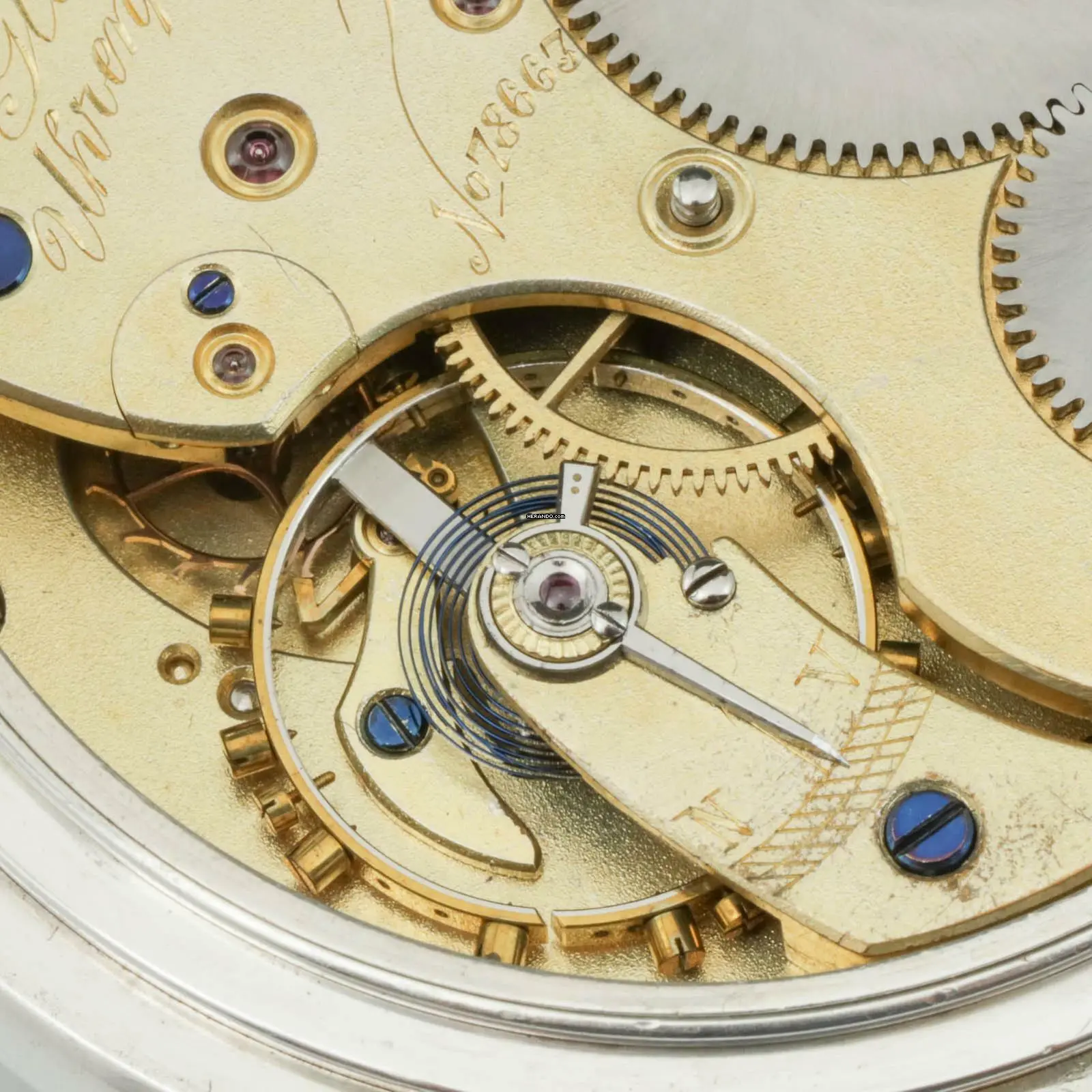
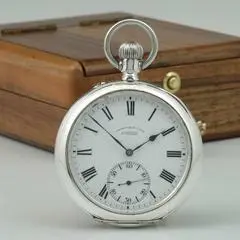
![]() Deutschland
Deutschland
Uhrenfabrik Union Glashütte in Sachsen Deutsche Marine Beobeachtungsuhr B-Uhr Silber Holz Etui 59mm ca. 1920
4.200,00 €
Basisdaten
- Model
- Sonstige
- Uhrentyp
- Taschenuhr
- Geschlecht
- Herrenuhr/Unisex
- Gehäusematerial
- Silber
- Farbe des Ziffernblattes
- Weiß
- Zahlen Ziffernblatt
- Römisch
- Aufzug
- Manuell
- Uhrenglas
- Mineralglas
- Bezel Material
- Silber
- Wasserdicht
- 123 atm
- Baujahr
- 1920
- Kaliber/Werk
- cal. 48/ 22''' Linien
- power_reserve
- 36
- Juwelen
- 16
- Durchmesser (mm)
- 59
- height
- 15
- Kleine Sekunde
- Ja
- Chronometer
- Ja
- Zeiger aus gebläutem Stahl
- Ja
Beschreibung
Uhrenfabrik Union Glashütte in Sachsen neuwertige Marine B-Uhr Kal. 48. mit Holz Etui 1920.
Offenes Lepine Gehäuse 0.900 Silber, Marken und Union Manufaktur Punze, Nr. 78 663 in beiden Deckeln, die Cuvette ist glatt, Gehäuseform „Lucia“. Scharniere und Öffnungslippe in Rotgold. Rückdeckel mit Gravur der Deutschen Marine „Krone, M, 1668“. Das Gehäuse ist in nahezu neuwertigem Zustand.
Ziffernblatt aus weißer Emaille, konstante Sekunde über der „6“. Originale, gebläute Stahl-Birnen-Zeiger, schwarze römische Ziffern, Ziffernblatt und Zeiger sind perfekt erhalten.
Anker-Chronometer -Werk: gekörnt und vergoldet, Kal. 48/ 22 Linien, gebläute Breguetspirale, Index Feinregulage, 16 Steine, Aufzugsräder mit Sonnenschliff, große Goldschrauben - Kompensationsunruhe, spiegelpolierte Stahlteile, signiert „Glashütter Uhrenfabrik Union, Nr. 78 663“. Das saubere Werk ist in nahezu neuwertigem Zustand.
Diameter 59,5 mm, Gewicht 135gr.
Das abgebildete, spätere, Marine Holz Etui ist Teil des Angebots.
Die Glashütter Uhrenfabrik Union Glashütte in Sachsen wurde von dem Dresdner Uhrenhändler Johannes Dürrstein am 01.01. 1893 gegründet. Dürrstein handelte bereits 1874 mit Adolph Lange in Glashütte einen Vertrag über den Alleinvertrieb der Lange-Uhren aus. Die in Glashütte produzierten Union-Uhren zeigten als Gehäusemarke einen Salomonischen Freimaurer Tempel mit drei von sieben Stufen als Aufgang und den beiden Säulen Jankin und Boaz (Lehrling und Geselle), darüber das Dreieck Gottes (ohne Auge). Dürrstein gehörte wie sein Freund Adolph Lange der Dresdner Loge „Zum Goldenen Apfel“ an und wollte mit diesem Logo auf seine Lebensphilosophie hinweisen. Auf dem Zifferblatt befand sich der Schriftzug "Uhrenfabrik Union Glashütte". Die technische Leitung hatte der Glashütter Uhrmacher Julius Bergter. Union Glashütte hielt etliche Patente und gewann viele Preise, u.a. eine Goldmedaille auf der Nürnberger Uhrenausstellung 1905.
Literaturhinweis: Reinhard Meis “100 Jahre Uhrenindustrie in Glashütte 1845-1945“. Im Buch wird ab Seite 401 eine identische Uhr ausführlich beschrieben. Siehe dazu auch den Union Verkaufs Katalog von 1919.
---ENGLISCH---------
Watch factory Union Glashütte in Saxony mint condition marine B watch cal. 48. with wooden case 1920.
Open face case 0.900 silver, hallmarks and Union's hallmark, No. 78 663 in both lids, the cuvette is smooth, case style “Lucia”. Hinges and opening lip in red gold. Back cover with engraving of the German Navy “”Crown, M, 1668“”. The case is in almost mint condition.
White enamel dial, constant seconds above the “6”. Original, blued steel pear-shaped hands, black Roman numerals, dial and hands are in perfect condition.
Anchor chronometer movement: grained and gilt, cal. 48/ 22''' lines, blued Breguet balance spring, index fine regulation, 16 jewels, winding wheels with sunburst finish, large gold screws - compensation balance, mirror-polished steel parts, signed “Glashütter Uhrenfabrik Union, No. 78 663”. The clean movement is in almost mint condition.
Diameter 59.5 mm, weight 135gr. The pictured, later, navy wood case is part of the offer.
The Glashütte watch factory Union Glashütte in Saxony was founded by the Dresden watch dealer Johannes Dürrstein on January 1, 1893. Dürrstein had already negotiated a contract with Adolph Lange in Glashütte in 1874 for the exclusive distribution of Lange watches. The Union watches produced in Glashütte featured a Solomonic Masonic temple as the case mark with three of seven steps as the staircase and the two pillars Jankin and Boaz (apprentice and journeyman), with the triangle of God (without an eye) above. Like his friend Adolph Lange, Dürrstein belonged to the Dresden lodge “Zum Goldenen Apfel” (The Golden Apple) and wanted to use this logo to indicate his philosophy of life. The dial bore the words “Uhrenfabrik Union Glashütte”. The Glashütte watchmaker Julius Bergter was the technical director. Union Glashütte held a number of patents and won many prizes, including a gold medal at the Nuremberg Watch Exhibition in 1905.
Literature reference: Reinhard Meis “100 years of the watch industry in Glashütte 1845-1945”. An identical watch is described in detail in the book from page 401. See also the Union sales catalog from 1919.
